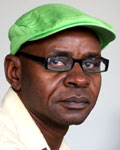
Top stories

RetailDiageo sells East African Breweries stake to Asahi for $2.3bn
Duncan Miriri and Emma Rumney 19 hours


The FinScope study, which uses Tanzania, Botswana, Zambia and Malawi as case studies, found similar patterns in these countries, where most of households live in inadequate dwellings they built themselves.
At least 86% and 69% of people in Zambia and Botswana, respectively, live in inadequate dwellings, while 80% of Tanzanians live in that type of housing. The number of people living in inadequate dwellings in Malawi is even worse, reaching 90%. South Africa accounts for between 50 and 60% of those.
Very few households appear to have housing loans, Illana Melzer, of Eighty20 Consulting, told delegates today at the FNB Learning Centre in Sandton, Johannesburg. However, she said, many people in those countries would prefer to get a loan to improve or build their houses, rather than purchase new ones. But, despite the FinScope study showing that huge opportunities exist for banks (rental and purchase), there are several challenges to consider before embarking in these markets.
Melzer said people face multiple constraints to get that loan, citing the following factors, which she described as access barriers:
Unpacking the affordability issue, she said 62% of people in Botswana cannot afford the 50 000 pula loan size (US$48 000) imposed by First National Bank, while 95% in Malawi cannot afford the 1.2 million kwacha (US$24 000) loan size from Standard Bank.
In Zambia 97% of people say the 80 million kwacha (US$16 100) loan size imposed by Barclays Bank is just too deep for their pockets, while in Tanzania, Azania Bank wants to loan potential customers a housing bond of up to 5 million shillings (US$ 3 087), which 74% said they cannot afford.
The Centre for Affordable Housing Finance in Africa (CAHF) said in its 2011 September Yearbook that affordability is a critical challenge, as current markets are structured to deliver housing that is too expensive for the population.
"A new house delivered is not necessarily an end product. The use of micro loans for housing is becoming prevalent, and an incremental housing process that proceeds in line with a household's affordability becomes possible," CAHF, a division of FinMark Trust, added.
Regarding the documentation, the FinScope study found that in Botswana, a country where urban people drive flashy cars but live in inadequate houses, 16% of people do not have a proper ID card.
The process is also complicated in Tanzania, where 9% of people do not have a voters' card, according to the study. As for banking status, 44%, 80% and 78% in Botswana, Malawi and Zambia, respectively, are not banked.
South Africa, which seems to have a more developed mortgage market, has over 1.8 million residential mortgages, though an analysis found that around 75% in the target market do not have access to mortgages.
Despite the housing finance market in Africa being small and presenting what seems like insurmountable challenges, Melzer remained optimistic, saying that there is scope for growth.
"The finance solution must align the housing solution, and there is also a need for more conversations, analysis and experimentation," Melzer concluded.
